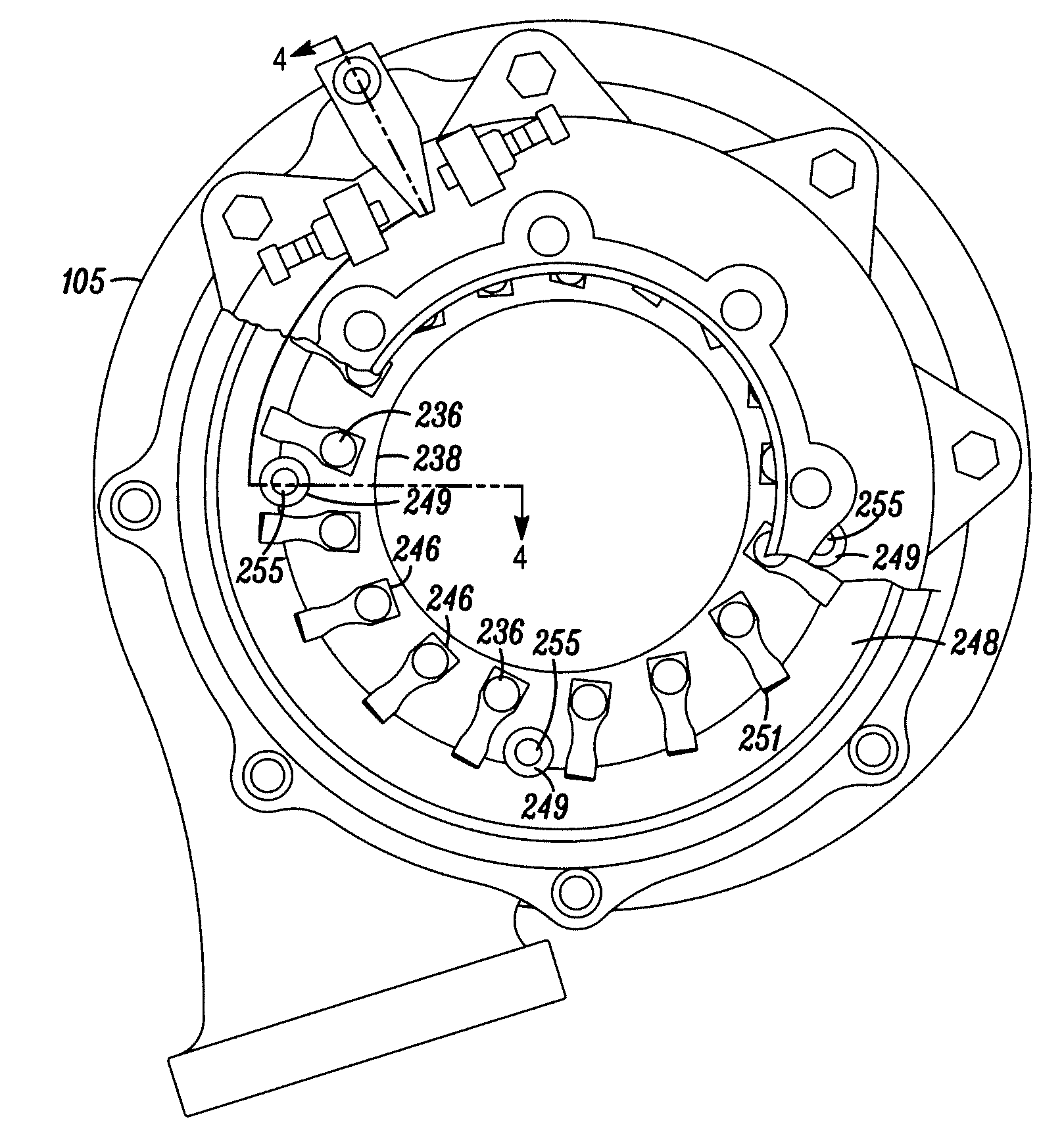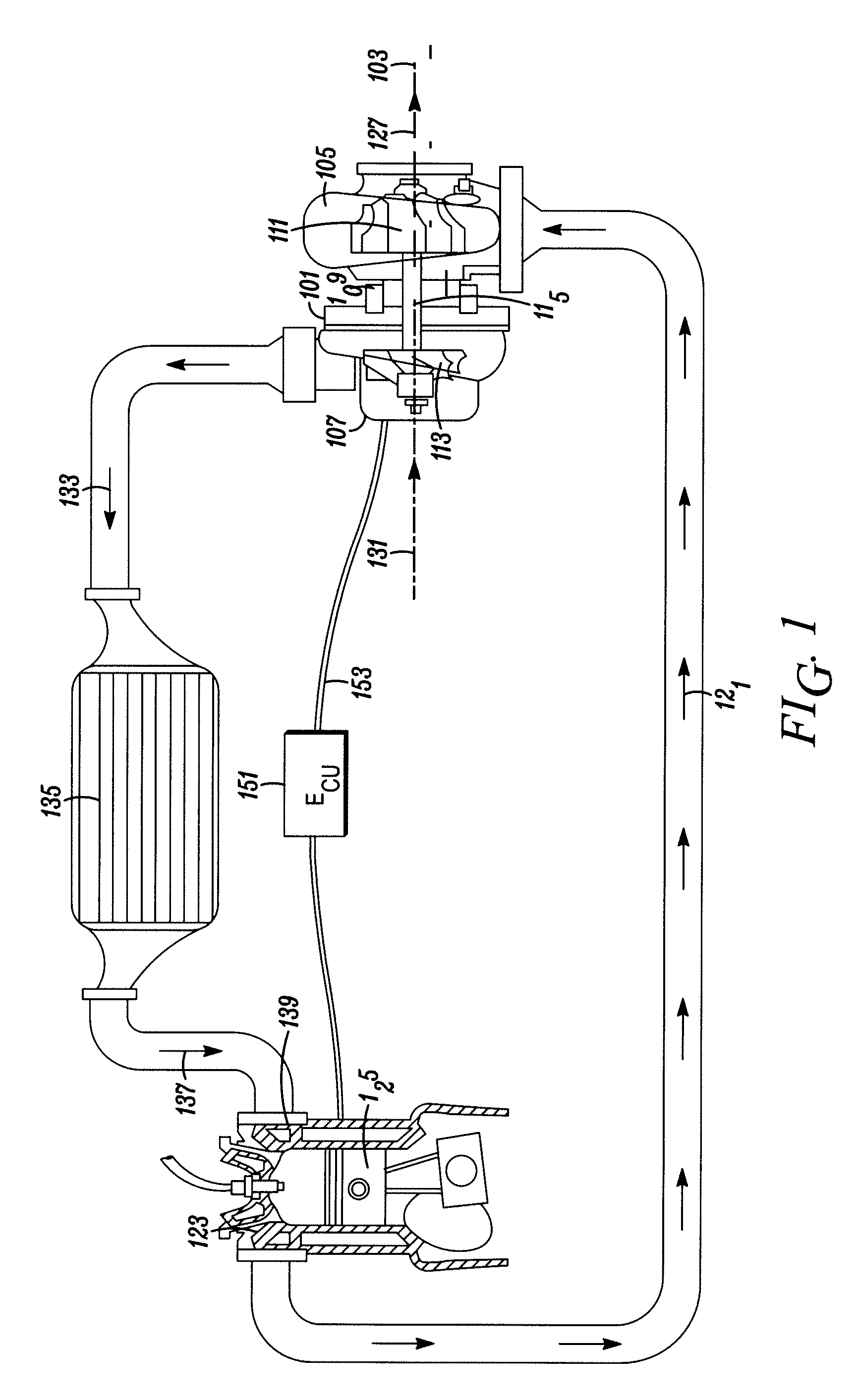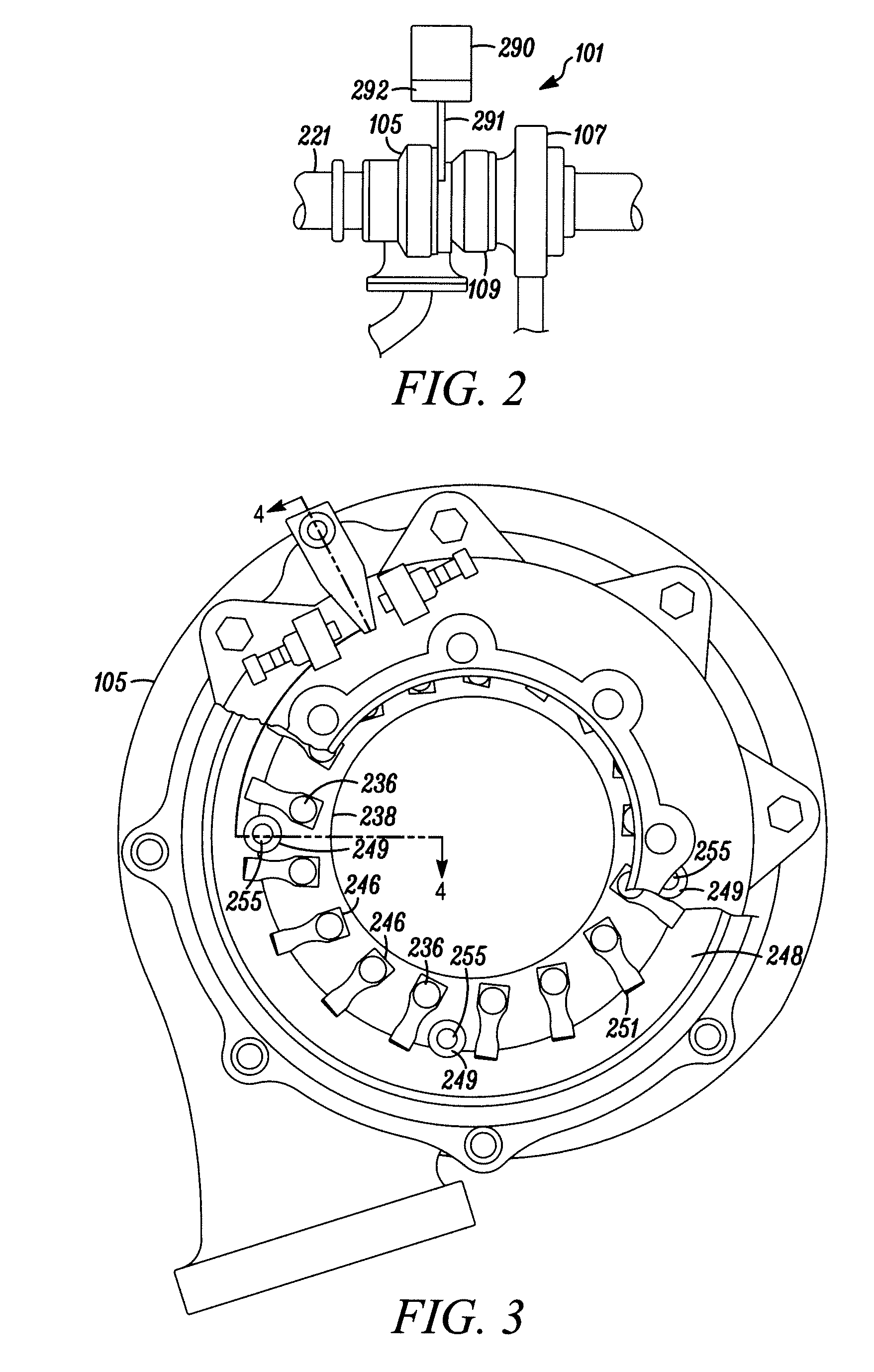Adaptive variable geometry turbocharger strategy
a turbocharger and variable geometry technology, applied in the direction of liquid fuel engines, electric control, instruments, etc., can solve the problems of inability to accurately memorize the minimum-flow actuator actuation position, wear and tear of components in the actuation system of the variable nozzle mechanism, and inability to adjust the minimum-flow actuator
- Summary
- Abstract
- Description
- Claims
- Application Information
AI Technical Summary
Benefits of technology
Problems solved by technology
Method used
Image
Examples
Embodiment Construction
[0016]The invention summarized above and defined by the enumerated claims may be better understood by referring to the following detailed description, which should be read with the accompanying drawings. This detailed description of particular preferred embodiments of the invention, set out below to enable one to build and use particular implementations of the invention, is not intended to limit the enumerated claims, but rather, it is intended to provide particular examples of them.
[0017]Typical embodiments of the present invention reside in a variable geometry controller for a turbocharger, along with associated methods and apparatus (e.g., compressors, turbochargers and turbocharged internal combustion engines). These embodiments are assemblies that provide for improved pressure ratios and / or related flow characteristics through the use of an actuation system implementing an adaptive control strategy configured to actuate a plurality of vanes exclusively through a range of positi...
PUM
 Login to View More
Login to View More Abstract
Description
Claims
Application Information
 Login to View More
Login to View More - R&D
- Intellectual Property
- Life Sciences
- Materials
- Tech Scout
- Unparalleled Data Quality
- Higher Quality Content
- 60% Fewer Hallucinations
Browse by: Latest US Patents, China's latest patents, Technical Efficacy Thesaurus, Application Domain, Technology Topic, Popular Technical Reports.
© 2025 PatSnap. All rights reserved.Legal|Privacy policy|Modern Slavery Act Transparency Statement|Sitemap|About US| Contact US: help@patsnap.com



